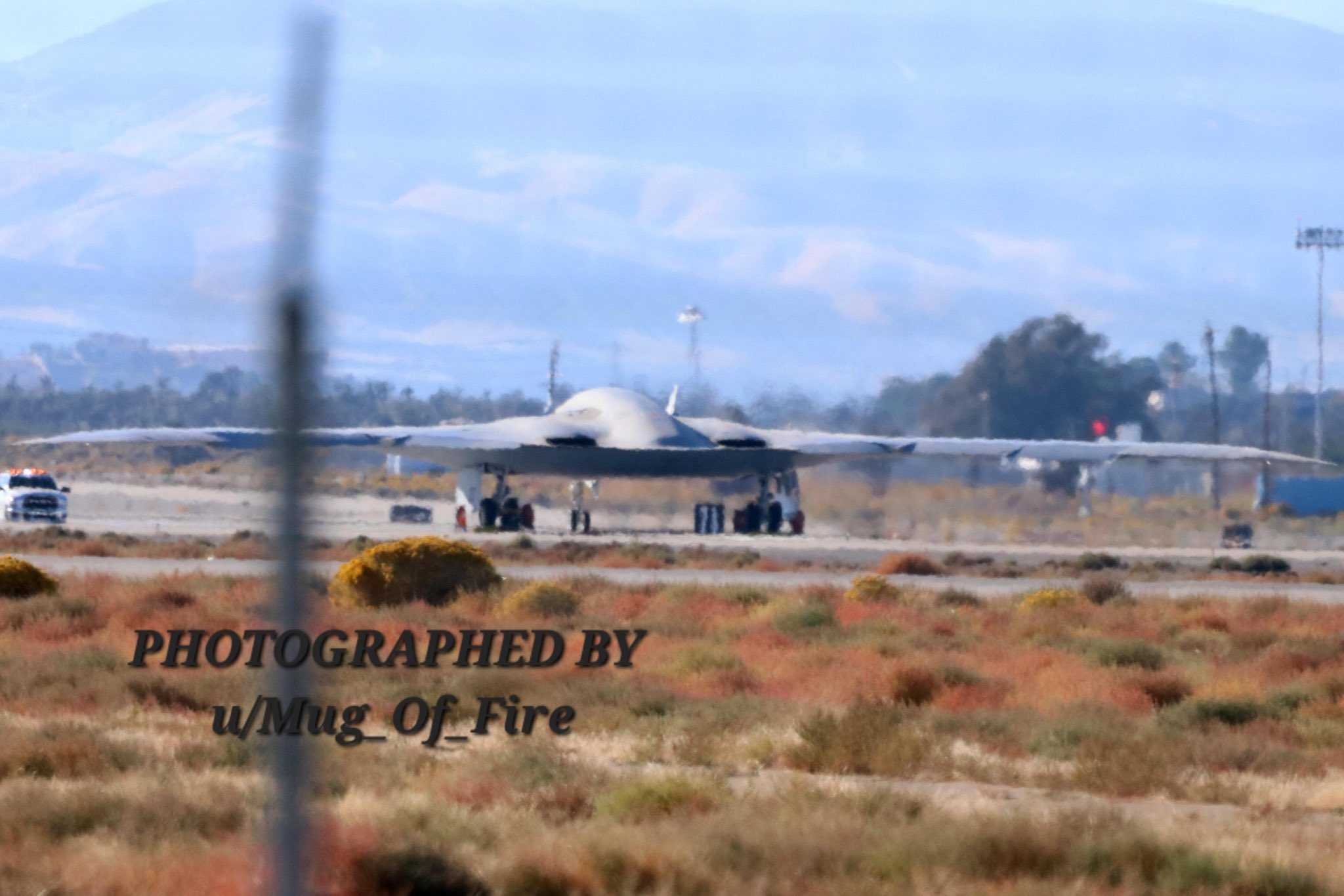The B-21 Raider is currently undergoing taxi tests at Air Force Plant 42 in Palmdale, California, marking a significant milestone for the Northrop Grumman-manufactured stealth bomber as it inches closer to its first flight.
On October 25, the Air Force officially confirmed that taxi tests have kicked off as part of the preparations for the bomber’s maiden flight by the end of this year.
An Air Force spokesperson said that thorough testing is pivotal in the B-21 flight test program, encompassing comprehensive evaluations of systems, components, and functionalities.
Such testing is instrumental in risk reduction, design optimization, and the overall improvement of operational effectiveness.
The confirmation of the B-21’s taxi tests followed the emergence of a photograph on social media. The image from the rear depicted the bomber in motion along a taxiway.

Over the last few days, social media platforms dedicated to monitoring Plant 42 in California, a facility shared by Lockheed Martin and Boeing, have been abuzz with reports of activity at Northrop’s end of the plant.
This activity includes taxi tests, indicating that the aircraft has likely already undergone a series of outdoor engine runs.
Taxi tests are a vital step in the testing process, typically starting with evaluations of ground-handling qualities at slow and medium speeds before moving on to high-speed tests, which are a direct precursor to the aircraft’s first flight.
The Air Force and Northrop Grumman are gearing up for the B-21 bomber’s maiden flight by year-end, approximately a year following its widely publicized unveiling in December 2022.
In preparation for this milestone, they conduct ground tests to ensure a smooth path to that inaugural flight. Northrop Grumman officials shared in July that the B-21 had completed its initial “power on” test.
Then, in September, General Thomas A. Bussiere, the Air Force Global Strike Command leader, revealed that the bomber had commenced engine runs as a crucial phase of its ground testing program.
Northrop Grumman B-21 Raider
The aircraft currently undergoing taxi tests is one of six known to be at various stages of production and has been described as production-ready.
These B-21s are being constructed using production tooling. During the September Air, Space, and Cyber conference, Northrop Grumman’s Aeronautics President, Tom Jones, emphasized that they should not be considered prototypes.
He stressed that the aircraft slated to take its first flight this year is essentially a production model with all necessary coatings and mission systems. It was built using standard factory processes, with regular workers and technicians involved, rather than engineers creating a custom initial model.
Although the first aircraft to fly falls under the “flight sciences” category, designed for collecting data on all aspects of the aircraft’s performance, the B-21 contract mandates the configuration of all test aircraft as operational models after the testing phase concludes.
The strategy is for the initial operational B-21 aircraft to be deployed into service in the mid-2020s. The Raider is slated to play a pivotal role in America’s nuclear deterrent triad for the foreseeable future while also possessing the capability to perform conventional strikes and serve in various other functions.
The United States Air Force (USAF) has outlined its intention to acquire a minimum of 100 Raider bombers, a significantly more significant number compared to the 20 earlier-generation B-2 Spirit stealth bombers it procured from Northrop.
The USAF has set its sights on replacing its fleet of 20 nuclear-capable B-2s and 43 Boeing B-1B conventional bombers with the B-21s. Meanwhile, the 72 Cold War-era Boeing B-52H heavy bombers will remain in service, with Boeing currently engaged in a project to modernize them into an upgraded variant known as the B-52J.
Meanwhile, Northrop Grumman’s CEO, Kathy Warden, mentioned in a quarterly earnings call in January that she anticipates the low-rate initial production contract to be awarded this year, but after the first flight.
During the second-quarter call, she reported completing the B-21’s initial “power on” test, paving the way for engine runs and taxi tests.
In both calls, Warden noted that the fixed-price nature of the LRIP contract, combined with recent inflation, implies that there won’t be any profit on the program during that phase.
Nevertheless, Northrop expects a US$60 million payment from the Air Force to counteract inflation and facilitate a smoother path toward the first flight.
- Contact the author at ashishmichel(at)gmail.com
- Follow EurAsian Times on Google News